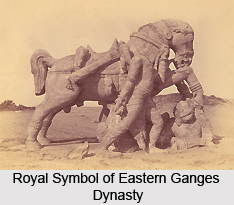 Anantavarman Chodaganga Devas was the Oriya ruler of Eastern Ganges Dynasty, was ruled from the year 1077-1150. He was the greatest of the Eastern Ganga kings, was born to Rajasundari Chola, daughter of Emperor Virarajendra Chola.
Anantavarman Chodaganga Devas was the Oriya ruler of Eastern Ganges Dynasty, was ruled from the year 1077-1150. He was the greatest of the Eastern Ganga kings, was born to Rajasundari Chola, daughter of Emperor Virarajendra Chola.
Anantavarman Chodaganga Deva rebuilt the temple of Jagannath on the ruins of the old one. It is said that King Chodaganga was originally a Shaivite from Srimukhalingam who became a Vaishnava under the influence of Ramanuja when he visited Jagannath Puri. Despite Kulothunga Chola I being his maternal uncle, it did not stop the Chola sovereign from burning Anantavarman`s empire.
Historians propose that it was probably because the king failed to pay his rent for two consecutive years. He was ousted by Kulothunga`s general Karunakara Thondaiman and this victory is detailed in the Tamil classic Kalingattupparani. Monarchs of the subcontinent assumed the title Chodaganga Deva throughout the ancient and medieval periods to allude to their Chola and Ganga heritage.
From various inscriptions it is known that King Anantavarman Chodaganga Deva established the present temple some time near the end of the eleventh century. A copper plate inscription made by King Rajaraja III found on the Tirumala temple near the north entrance states that Jagannath temple was built by Gangesvara, i.e., Anantavarman Chodaganga Deva.
Later, King Ananga Bhima Deva II (1170-1198) did much to continue the work of Chodaganga Deva, building the walls around the temple and many of the other shrines on the temple grounds. He is thus often considered one of the builders of the temple. He also did much to establish the regulations around the service to the Deity.
A scion of this dynasty made rich donations to the Koneswaram temple, Trincomalee on Puthandu, 1223 AD in the name of King Chodaganga Deva. Shortly afterwards, the Konark temple was constructed in Orissa under his rule.
This article is a stub. You can enrich by adding more information to it. Send your Write Up to content@indianetzone.com






